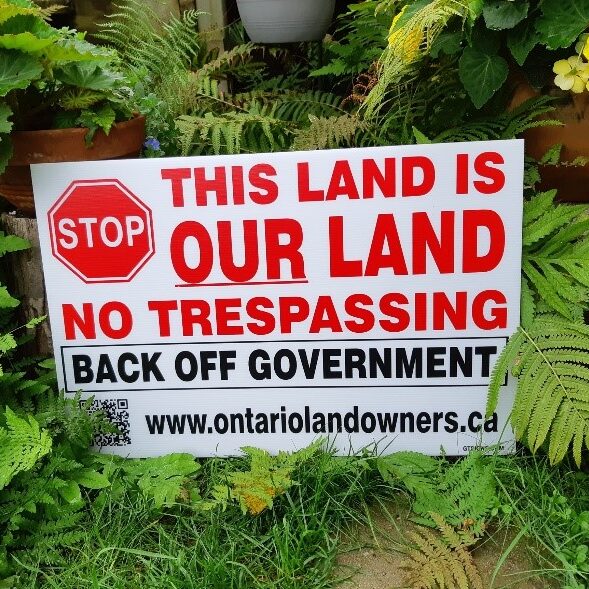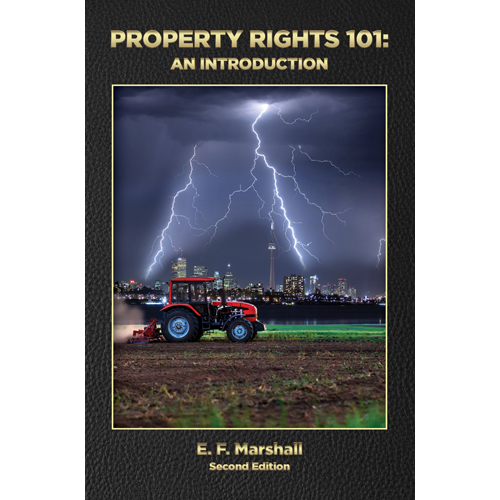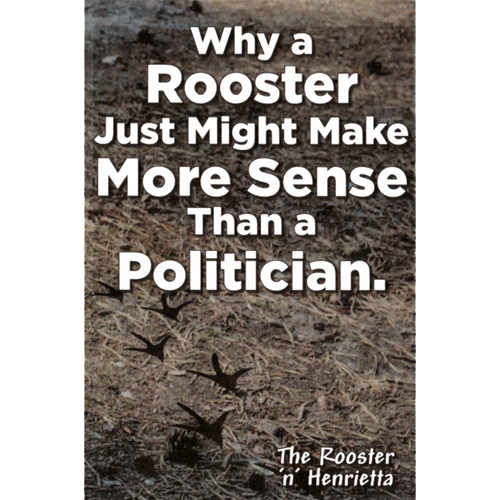Bill 28 – ALUS – A Bill All of Us should Watch by Shirley Dolan
- 2018-09-01
- By admin
- Posted in Latest News

Shirley Dolan
When the Progressive Conservatives won a majority last June 7th, many of us breathed a sigh of relief and hoped for the much-wanted tone change in Ontario with respect to property rights. The tone change was subtly evident in the change of name of the Ministry of the Environment and Climate Change (MOECC) to the Ministry of the Environment, Conservation and Parks (MOECP). It was very evident in the announcement by the Ford government that revoked the cap and trade tax regime that punishes Ontario residents at the gas pump.
We were hopeful that the past 15 years of punishing property owners with brutal regulations and designations on their property would finally see an end, or at least a softening of the many schemes for removing our rights to use our land, and in the process, diminishing the value of that land. Over the 15 years of the Liberal government, the Ontario Landowners Association (OLA) heard countless stories of property owners, for example, being told they cannot build a house, or a shed, or put on an addition, or rebuild a house that had burned down because they lived on a 100-year flood plain. It seemed in some instances that even though all the rules set out in a building permit were met, new restrictions would arise, and a stop-work order would be delivered along with threats of heavy fines from a conservation authority officer. The perceived needs of the environment were held above the rights of the property owner.
Anticipating a better relationship with government officials, less red tape, and a reduction in programs “to help us better manage our lands”, the OLA is taking a close look at Bill 28, Alternate Land Use and Services (ALUS) Program for Agricultural Land Act, 2018 by MPP Toby Barrett. Barrett is the Parliamentary Assistant to the Minister of Natural Resources and Forestry (MNRF), Jeff Yurek.
Now the MNRF is the Ministry responsible for Conservation Authorities, the arms length agency which has caused grief to so many property owners. What could this new program mean for property owners? Is it more of the same or a new way of engaging property owners?
The Bill wants the MNRF set up a framework for farmers to work within the Alternative Land Use System (ALUS), a program, according to MPP Barrett in the latest edition of Ontario Farmer, that “links the environmental demands of society with farmers who support environmental services”.
ALUS Canada is a Weston Family Initiative that is operating in six provinces in Canada. According to their website (www.alus.ca), “ALUS helps farmers and ranchers restore wetlands, reforest, plant windbreaks, install riparian buffers, manage sustainable drainage systems, create pollinator habitat and establish other ecologically beneficial projects on their properties.
What’s more, ALUS provides per-acre annual payments to ALUS participants to recognize their dedication to managing and maintaining all the ALUS projects on their land.” As MPP Barrett puts it, the program “rewards producers for being responsible for their land” rather than “saddling farmers with restrictions and red tape that prevents them from using their land to its full potential”.
Barrett wants to follow the example of ALUS in Prince Edward Island where the program is administered by the provincial government https://www.princeedwardisland.ca/en/service/alternative-land-use-services-alus-program.
As Barrett says in the Ontario Farmer, ALUS has been operating for 15 years, puts the farmer in the driver’s seat, and promises a well-managed and protected environment at a reasonable cost to all concerned. So, it begs the question: why does the Ontario government need to get involved? The Bill proposes that the MNRF develop, within one year, a framework and action plan that provides guidelines on how agricultural land can be used in the ALUS program, provide education materials, promote research and hold symposia, and develop programs for the government to fund.
Some questions arise:
- If the ALUS program is working, do we need an extra layer of bureaucracy to administer it? Adding government oversight and administration does not seem to align with cutting red tape and reducing government spending.
- If the Bill passes and the MNRF begins administering the ALUS program, does that mean that farmers can no longer work directly with ALUS, as they have in the past, if they so choose?
- Will the Ontario government put different rules in place than those now in place under ALUS? For example, conservation agreements with ALUS can run from three to ten years in length with an opt-out option available. https://alus.ca/home/about-us/what-is-alus/faqs/. Would this change under the Ontario government?
- Who will do the inspections of private property under the ALUS program and how will they be carried out?
I spoke to Tom Black, President of the OLA. He wondered about similarities between the ALUS program and others like Nature Conservancy of Canada (NCC) where “the landowner agrees to limit some uses of a piece of land to protect its natural features and the species that live there. In return, the landowner is paid or receipted for placing the agreement on their land. NCC monitors the land in question to ensure the agreement is being respected.” “It appears to be a type of subsidy to farmers to conserve their land”, he said of the ALUS program and others like it. He also wondered whether there would be tax incentives for land under the ALUS program as there is through the MNRF for woodlands registered under the Managed Forest Tax Incentive Program. We wonder how many organizations there are in Ontario that entice farmers to enter into agreements to conserve land.
At the moment, there are more questions than answers about Bill 28 and its relationship to ALUS Canada. If you own agricultural land, ask your MPP about Bill 28 and what it means to you. The OLA will be continuing to follow the Bill’s progress at Queen’s Park.
Search:
Categories
Archives
- April 2024
- January 2024
- December 2023
- November 2023
- August 2023
- July 2023
- June 2023
- May 2023
- April 2023
- March 2023
- February 2023
- January 2023
- December 2022
- November 2022
- October 2022
- September 2022
- August 2022
- July 2022
- June 2022
- May 2022
- April 2022
- March 2022
- February 2022
- January 2022
- December 2021
- November 2021
- October 2021
- September 2021
- August 2021
- July 2021
- June 2021
- May 2021
- April 2021
- March 2021
- February 2021
- January 2021
- December 2020
- November 2020
- October 2020
- September 2020
- August 2020
- July 2020
- June 2020
- May 2020
- April 2020
- March 2020
- February 2020
- January 2020
- December 2019
- November 2019
- October 2019
- September 2019
- August 2019
- July 2019
- June 2019
- May 2019
- April 2019
- March 2019
- February 2019
- January 2019
- December 2018
- November 2018
- October 2018
- September 2018
- August 2018
- July 2018
- June 2018
- May 2018
- April 2018
- March 2018
- February 2018
- January 2018
- December 2017
- November 2017
- October 2017
- September 2017
- August 2017
- July 2017
- June 2017
- May 2017
- April 2017
- March 2017
- February 2017
- January 2017
- December 2016
- November 2016
- October 2016
- September 2016
- August 2016
- July 2016
- June 2016
- May 2016
- April 2016
- March 2016
- February 2016
- January 2016
- December 2015
- November 2015
- October 2015
- September 2015
- August 2015
- July 2015
- June 2015
- May 2015
- April 2015
- March 2015
- February 2015
- January 2015
- December 2014
- November 2014
- October 2014
- September 2014
- August 2014
- July 2014
- June 2014
- May 2014
- April 2014
- March 2014
- February 2014
- January 2014
- December 2013
- November 2013
- October 2013
- September 2013
- August 2013
- June 2013
- April 2013
- October 2012
- May 2012
- September 2011



